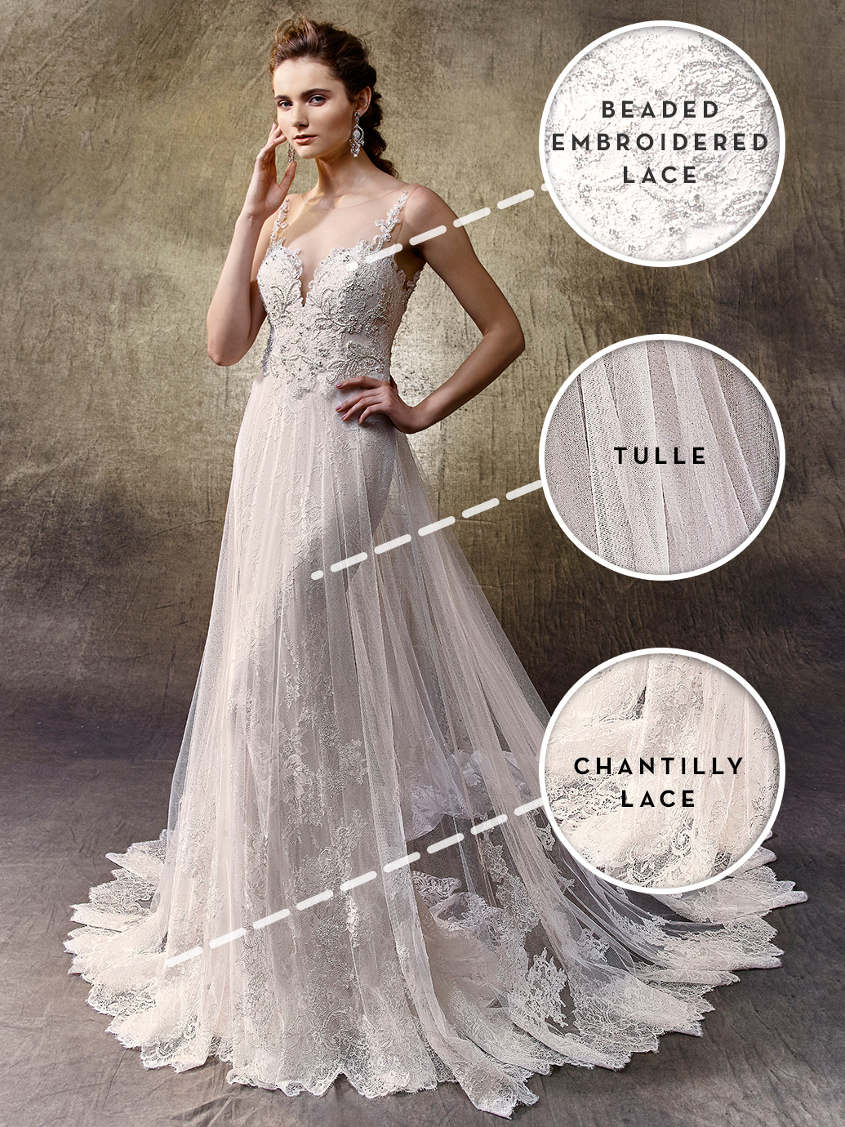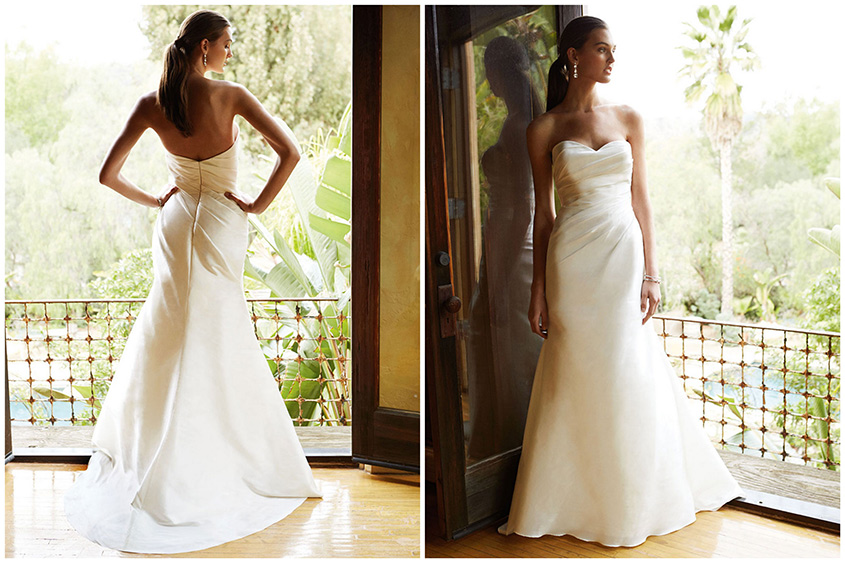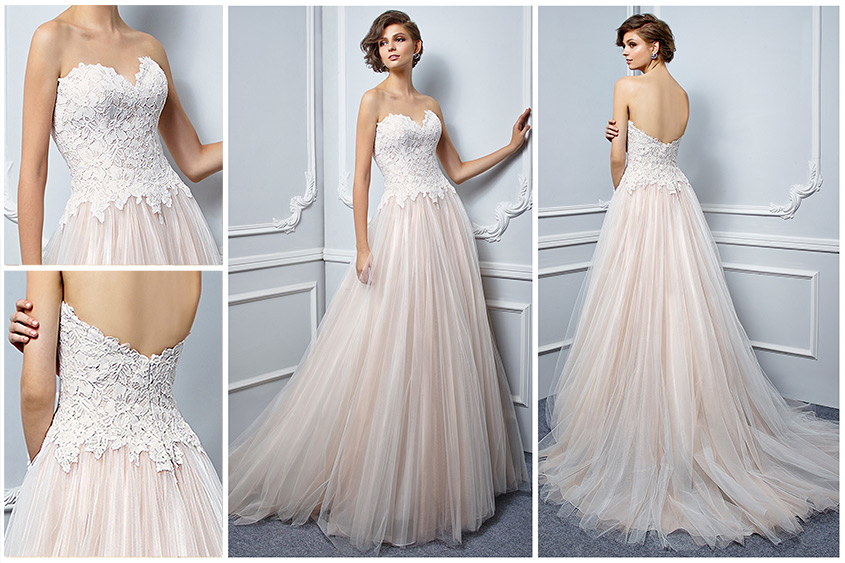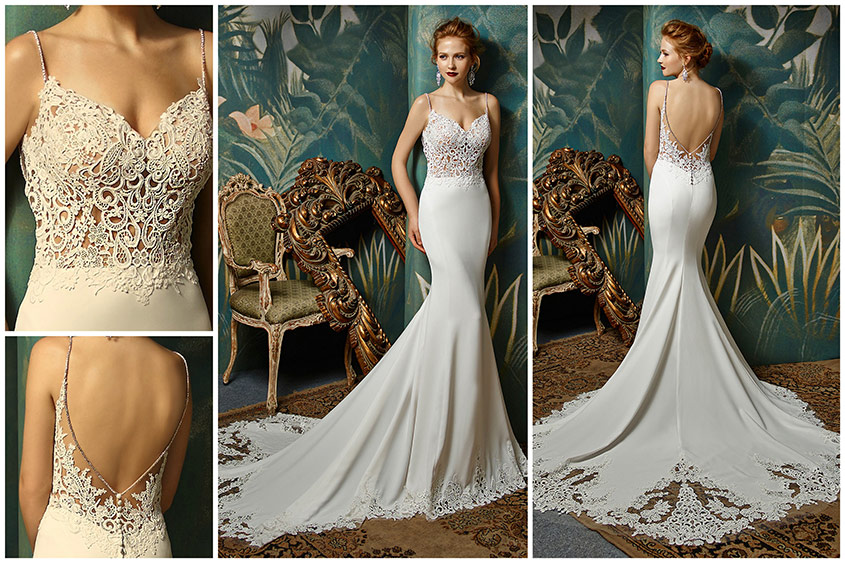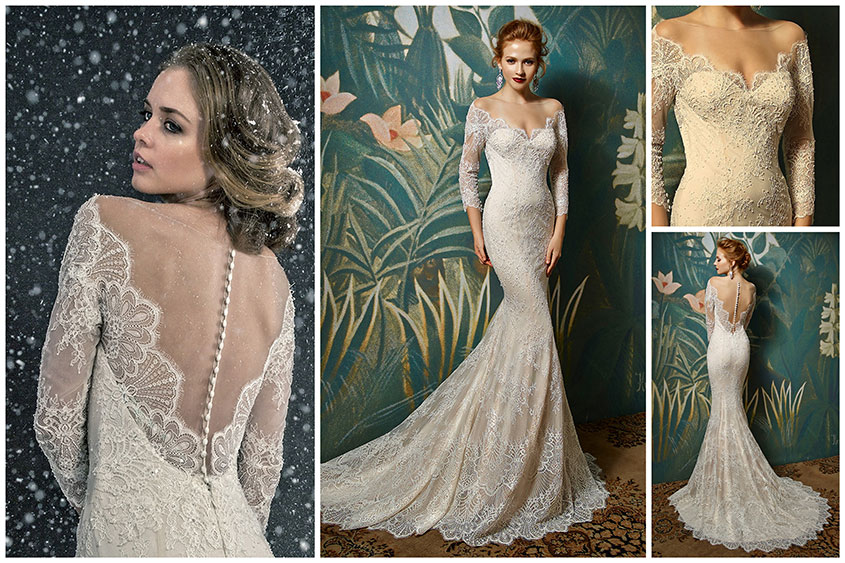Fashion
Bridal Fabrics 101
The Fabric For You: All About Your Favorite Bridal Fabrics -- and the Others You've Never Heard Of!
A dress’s cut, texture, style and drape, combined with the season of your wedding, are all important factors in determining the best fabric for a wedding gown. A fishtail skirt, for example, can look and feel very different in a variety of different fabrics as each material is designed to create different effects and finishes.
Pictured above: Style Lovely from the 2017 Enzoani collection
Almost every Enzoani gown uses more than one type of fabric to achieve its silhouette, style and statement. Here are the most common fabrics used in the process of creating your dream Enzoani gown.
CHIFFON
Chiffon is a soft and sheer material without any sheen, and is often used as an overlay, in layers, or as an accent detail due to its sheer and transparent style. This makes it popular for overskirts, sheer sleeves and column or sheer silhouettes.
Chiffon can be called the lightest wedding dress material. The weightless material guarantees a flowy and ethereal bridal gown. Chiffon is perfect for destination weddings.
Chiffon can be used for a variety of silhouettes, and a great example of this is between BT17-04 (below center) and BT17-14 (below right): the figure-hugging mermaid cut of the BT17-04 to the multi-layered chiffon on the BT17-14.
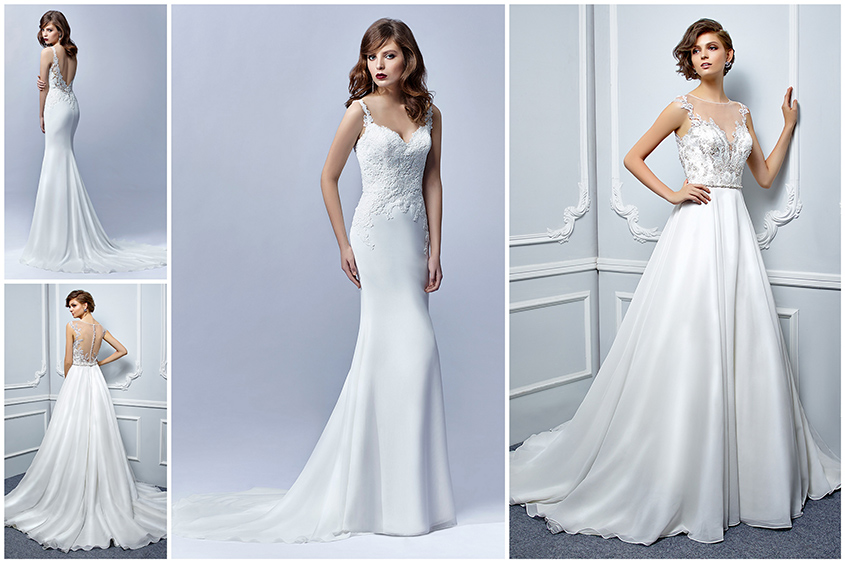
TULLE
Tulle is a gauzy, netted material, often used for skirts veils. Often confused with net fabric, this lightweight material is made of silk, nylon or rayon.
It is typically used in multiple layers to create volume for a ‘ball-gown’ look, or softer tulle can be used for a more gentle flow.
A prime comparison of the versatility of tulle is between 2017 Enzoani styles, Luanne (below right), with its full ball gown ruffled, tiered tulle skirt, compared with BT17-05 (below center) with the softest A-Line tulle skirt.
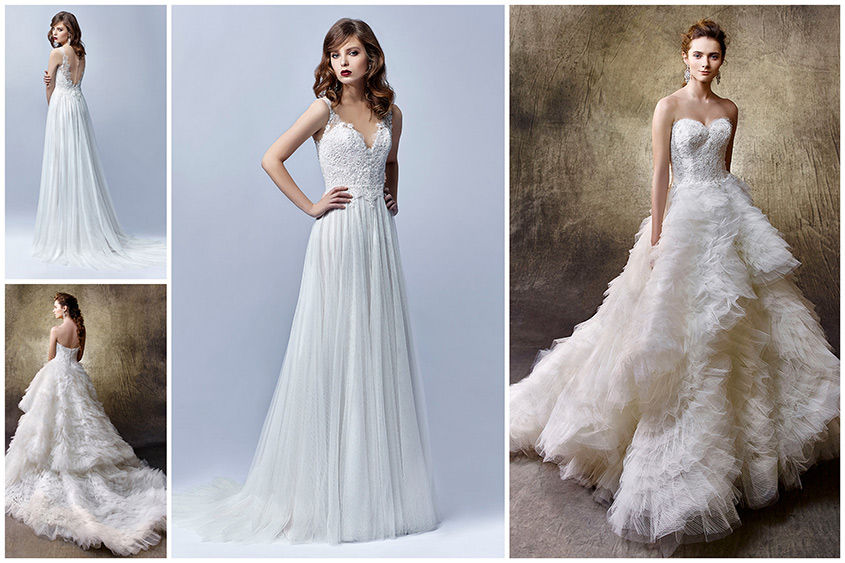
SATIN
One of the most common, most versatile, and most durable bridal fabrics, satin is a heavy, smooth fabric with a high sheen and made from any number of fibres including silk, nylon, or rayon. Satin is actually a type of weave and gets its high, even sheen from the way in which its fibres are woven together.
It's a supportive fabric that works with every body type and is a good choice for ruched, draped, and ball gown styles. As it tends to be a thicker fabric, it's also a good choice for cooler weather weddings.
Juniper from the 2017 Blue by Enzoani collection (below right) is a gorgeous example of the structural characteristics of satin along with this elegant, full satin A-Line silhouette: 2016 Blue by Enzoani style Ingenio (below left).
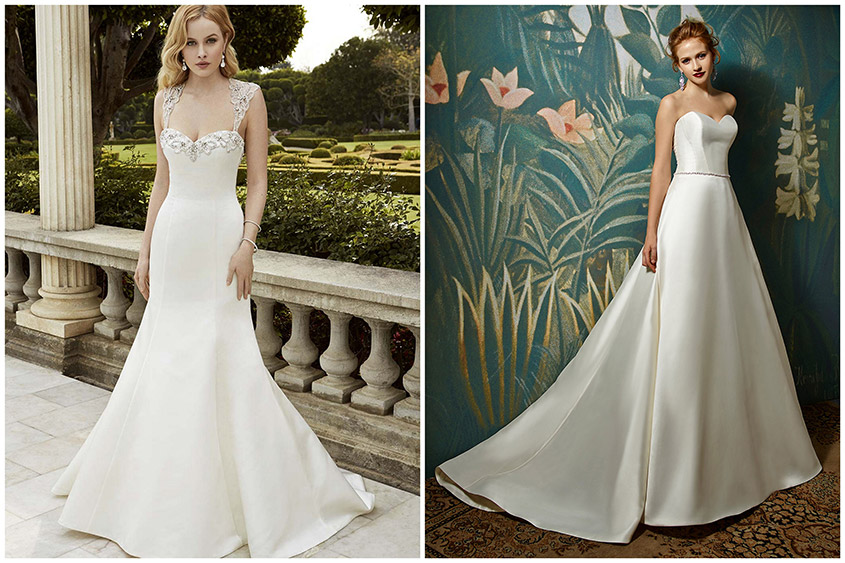
ORGANZA
While sheer and lightweight like chiffon, organza holds a more structured silhouette with a stiffer texture similar in effect to tulle, but more flowing. A delicate fabric, it’s often used for layered gowns to add fullness in skirts, yet also used in sleeves and overlays. Its delicacy makes it perfect for summer weddings.
Most of Enzoani’s tulle gowns are designed with a base layer of organza underneath to help with shape and structure. An example of this is the Lidia Skirt (below right) from the 2017 Enzoani collection. The organza layer is overlaid with layers of the softest of tulle providing a flowing gorgeous silhouette. 2017 Beautiful style BT17-13 (below center) also features a gorgeously sleek organza skirt to complement the traditional lace neckline.
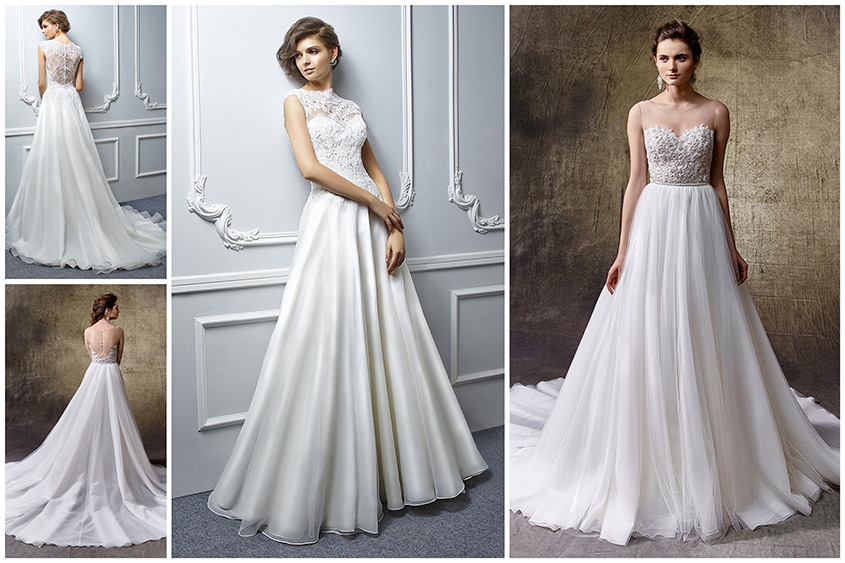
SILK
A fabric full of sheen, silk is one of the world's oldest known fibres. A natural fibre made by silk worms, it is also one of the most expensive fabrics. Although delicate in looks, it's actually very durable, comes in different textures and styles, and is suited for all seasons. One of the most traditional fabrics, silk is not only timeless but also incredibly versatile.
Variations include gazar, mikado, and dupion to name a few.
Liliana from the 2017 Enzoani collection (below) is made of the highest quality silky dupion for a look that is stunning in its sophisticated simplicity.
TAFFETA
Known for its signature "swooshing" sound, taffeta is made from either silk or synthetic fibres. The stiffer the taffeta, the higher its quality.
Its lustrous sheen makes it one of the favourite fabrics for bridal dresses. It’s a fabric fit for all types of silhouettes, but especially ball gowns and A-line dresses with ruched or draped detailing.
The asymmetrical ruched bodice and iridescent sheen can be seen on the 2016 Beautiful style BT16-17 (below).
CHARMEUSE
Charmeuse is a lightweight, sleek, semi-lustrous and soft fabric that is usually made from silk, or a similar-looking material that is synthetic. Satin-like to the touch, however not as glossy as satin, its soft drape makes it popular for flowing styles, such as an empire-waist dress and column gowns. Charmeuse is often used to provide a sleek luxurious lining.
Charmeuse is an incredibly luxurious fabric; however, it is not as forgiving and can show every flaw or line.
Below center: The sleek and sophisticated Inez from the 2016 Blue by Enzoani collection with its full length soft, rich charmeuse. Below right: The softest of mocha charmeuse lining with intricate embroidered lace overlay from the 2017 Beautiful style BT17-08.
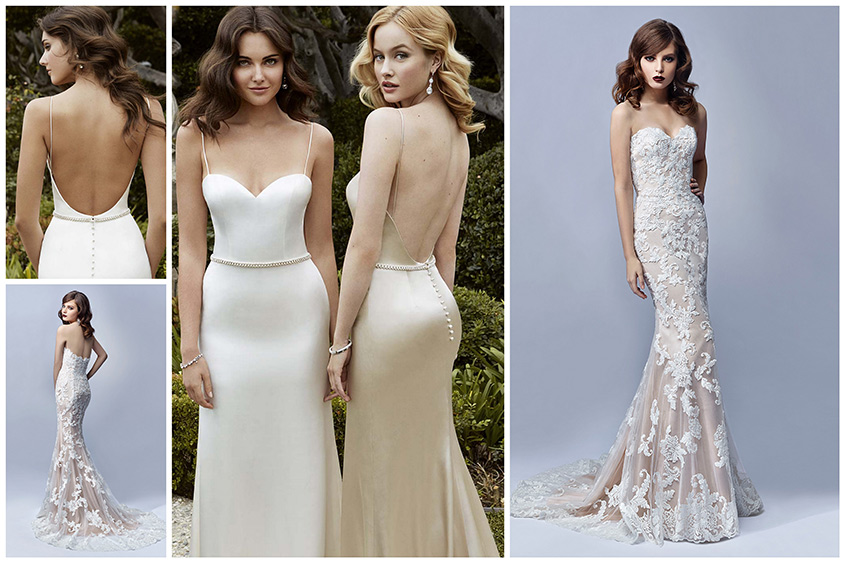
GEORGETTE
Georgette is also a fabric traditionally made from silk, although synthetic fibres are often used as well. What makes georgette distinctive is the crinkly crepe-like texture, which feels slightly rough, but gives the fabric a bouncy, springy, flowing look so that it almost appears to move on its own.
The threads used in georgette fabric are highly twisted, which causes them to crinkle as they relax. The weave of georgette tends to be rather tight, but the overall appearance is slightly sheer, since the threads are very thin. Unlike other silk-based fabrics, georgette is also unusually strong, and it holds up well to wear.
Georgette is quite similar to chiffon in drape and feel. It is only slightly heavier than chiffon and a bit less sheer. It is ideal for outdoor or daytime weddings due to its light weight.
2017 Enzoani style Lacy (below right) features the softest stretch georgette fabric brought to the next level with a sultry low illusion back. 2017 Beautiful by Enzoani style BT17-27 (below left) is another fine example of stretch georgette creating a sleek and clean look.
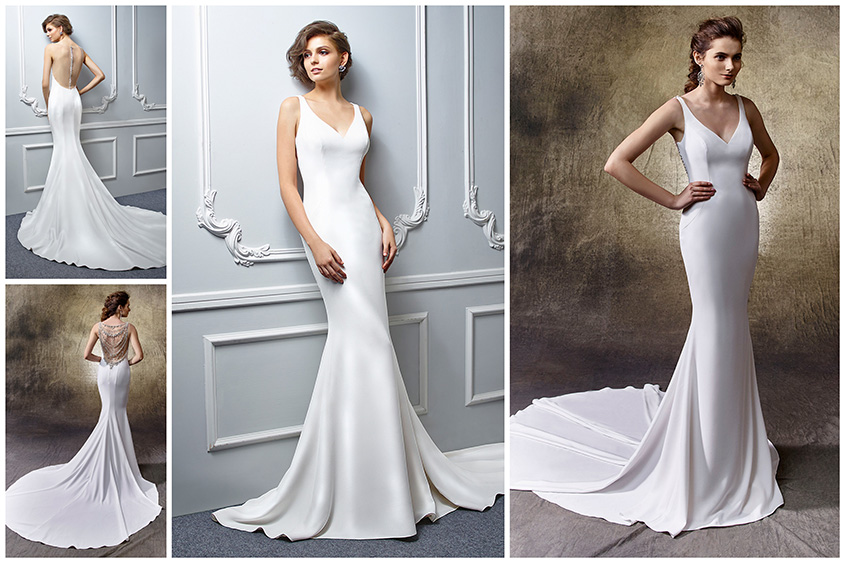
LACE
Lace comes in many different varieties of styles, some of which are centuries old and most often named after the city where they were originally produced. Lace is an open-weave fabric that gives an adorning touch to gowns.
There is a whole variety of lace used for wedding gowns, but are all stunningly beautiful in their own unique ways. Lace can be corded, embroidered, re-embroidered and beaded, which can change the appearance of the lace and add a whole new dimension to the finished piece.
Here we will look at the varieties of lace that are often used throughout the Enzoani collections.
Alencon Lace
Sometimes called the “queen of lace,” Alencon Lace is a fine needlepoint lace usually found with a floral design on a sheer or net back and sometimes features beadwork.
Originating in the 16th century in the French region of Alencon, just like other French laces, it is ideal for top layers and details. The distinguishing feature of this lace is the fine cording that is applied to the outlines of the motif. Although still delicate, this fabric has more body and structure than something like Chantilly Lace.
Pictured below: Style BT17-19 from the 2017 Beautiful Bridal collection
Guipure Lace
Also known as Venetian lace, Guipure is French bobbin lace which is one of the most robust and elegant laces. It is commonly used in bridal gowns, as it is easy to work with and doesn’t fray. Guipure is much heavier and more textural than the other laces.
Patterns are created by a series of close, embroidered stitches onto a fine fabric that seems to disappear in the finished piece.
Pictured below: Style Juri from the 2017 Blue by Enzoani collection
Chantilly Lace
Originating in the 17th century and named after the city of Chantilly, France, this lace is very delicate and elegant. Chantilly Lace has a fine cord outlining it and is known for its abundant details and elaborate motifs. This is the most expensive type of lace made.
Pictured below: Style Jadorie from the 2017 Blue by Enzoani collection
Embroidered Lace
Embroidered laces typically use a tulle backing, onto which a decorative pattern is applied using needle and thread to form the appearance of an applique. This can then be further embroidered, if required, by adding beading, sequins and cording. Embroidered lace pieces on a separate tulle layer create depth and dimension.
Pictured below (clockwise, starting left): Style Leilani from the 2017 Enzoani collection; Style Loraine from the 2017 Enzoani collection; Style Lindy from the 2017 Enzoani collection
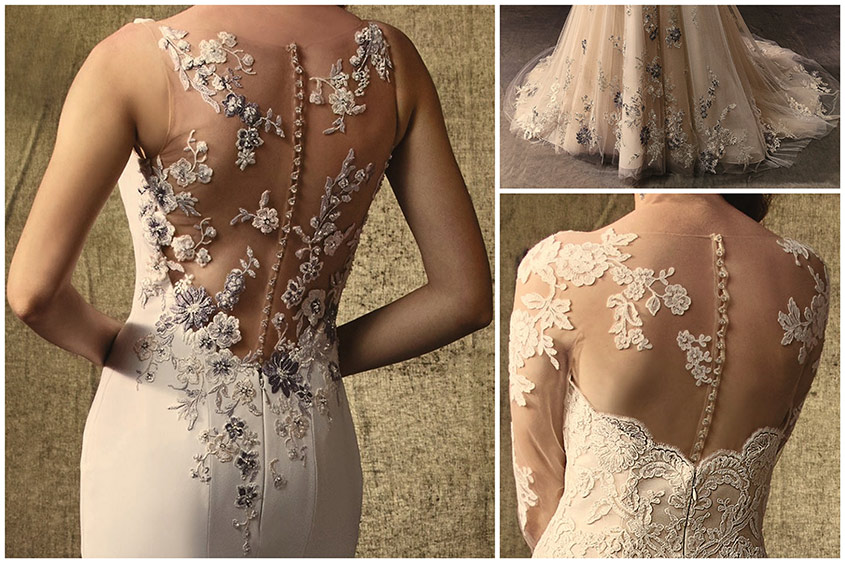
more from our blog
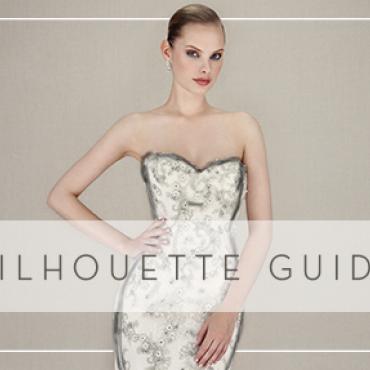
Fashion
Finding the perfect dress for your body shape
Whether you're an "hourglass," "pear," "apple" shape or all/none of the above, we've got you covered!
WEITERLESEN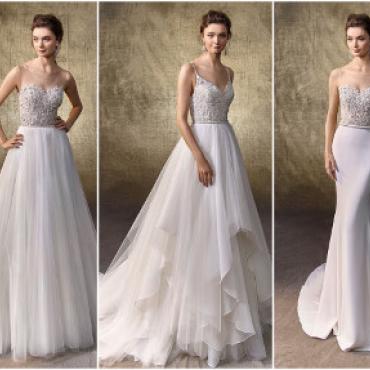
Fashion
Your Dream Look: Mix and Match
Create Your Perfect Wedding Day Style(s) With Stunning Separate Pieces!
WEITERLESEN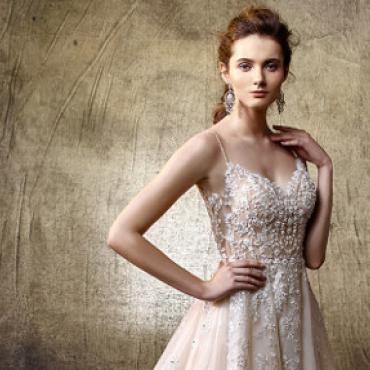
Fashion
The New 2017 Gowns Revealed!
Introducing the Highly Anticipated 2017 Enzoani Bridal Collections
WEITERLESEN
